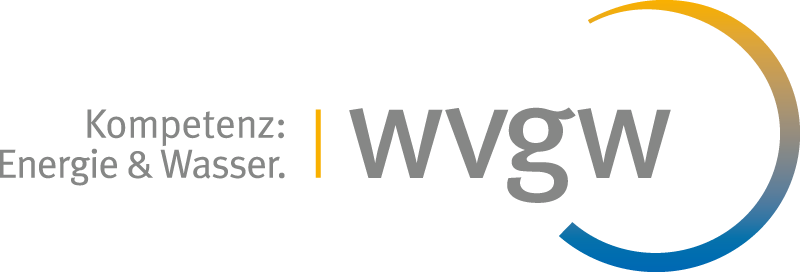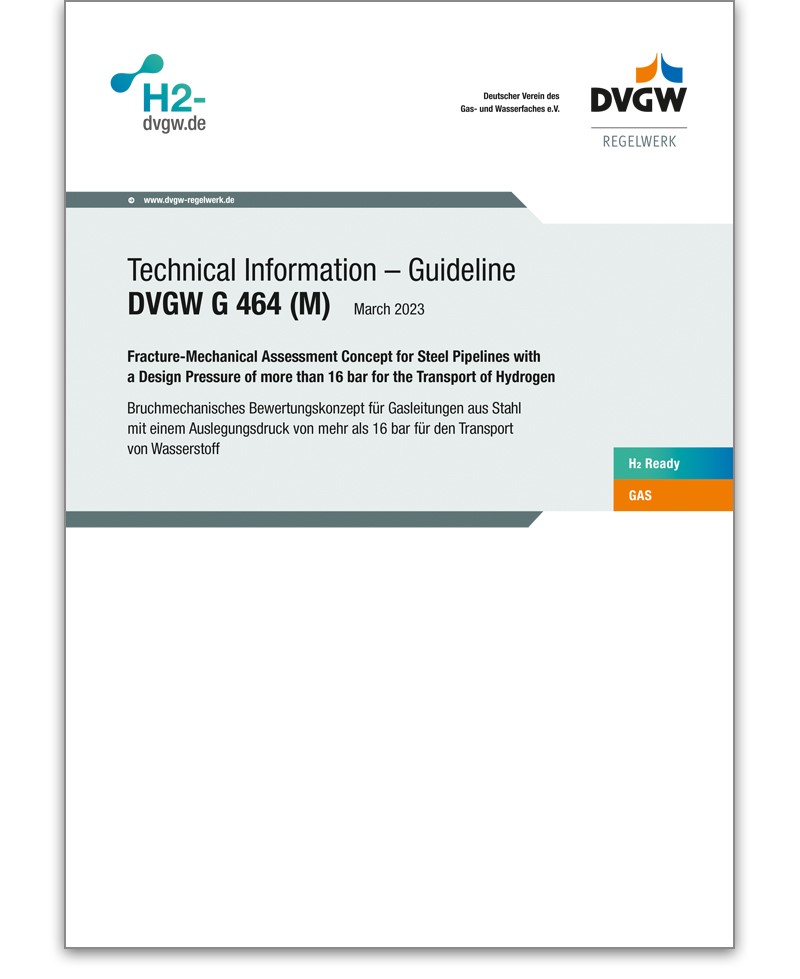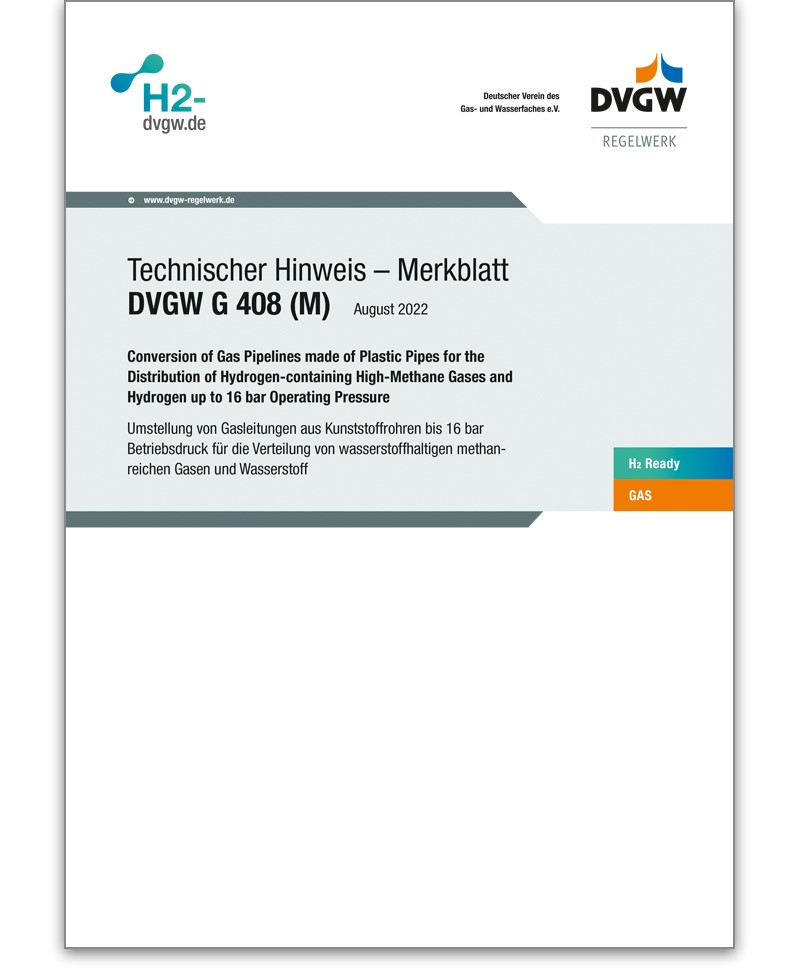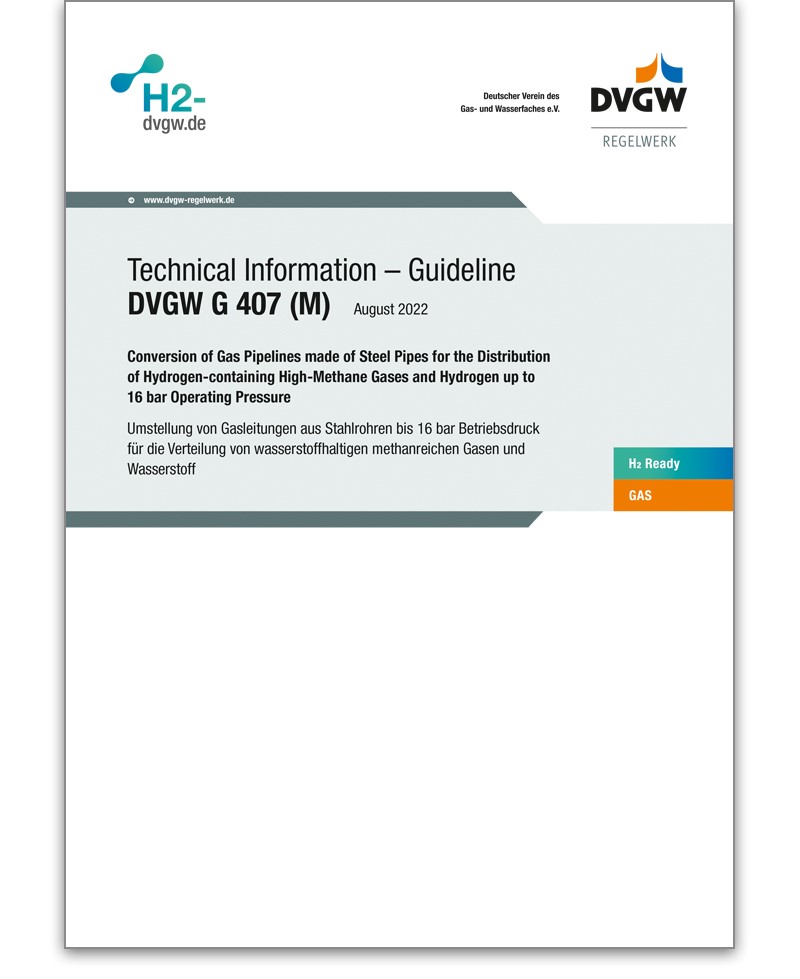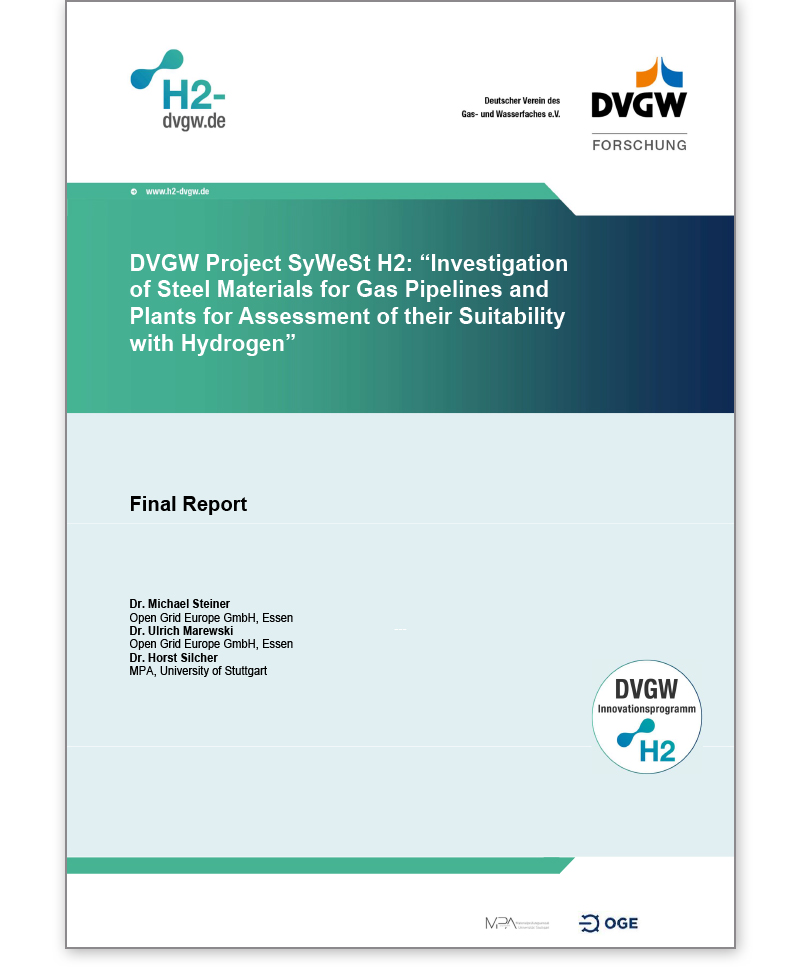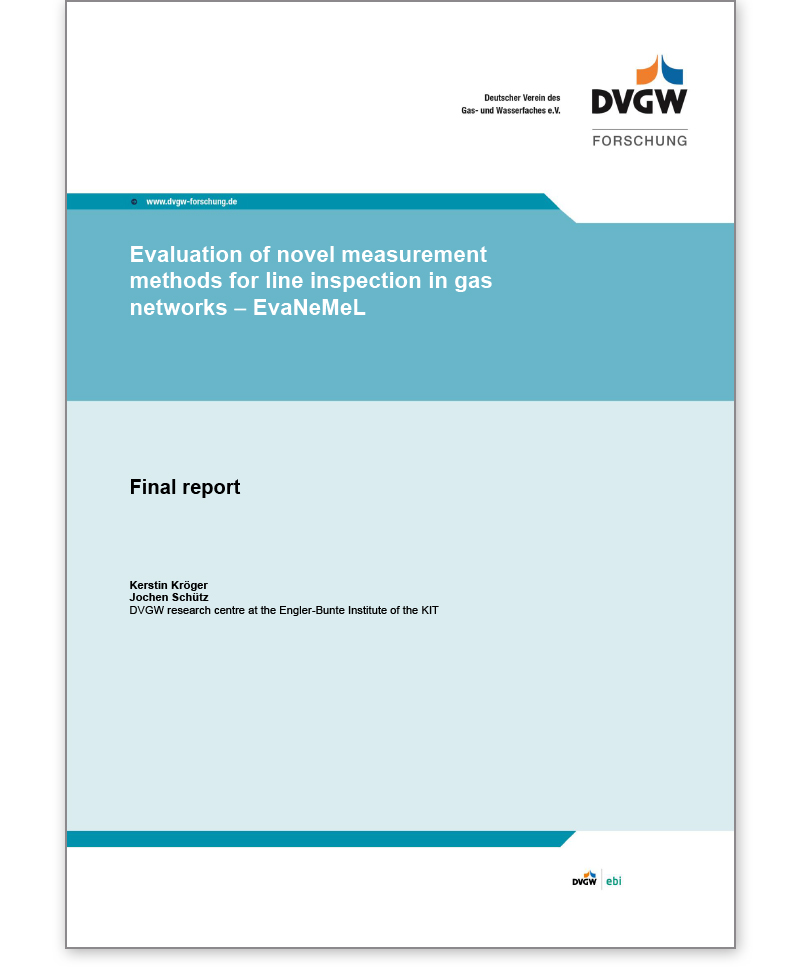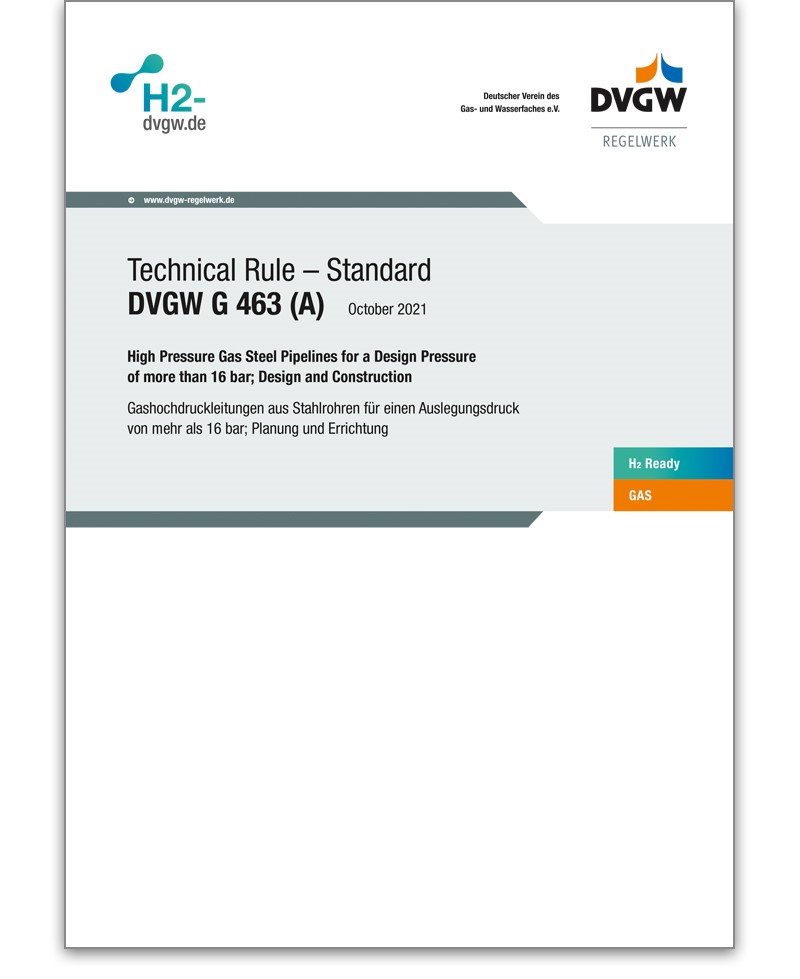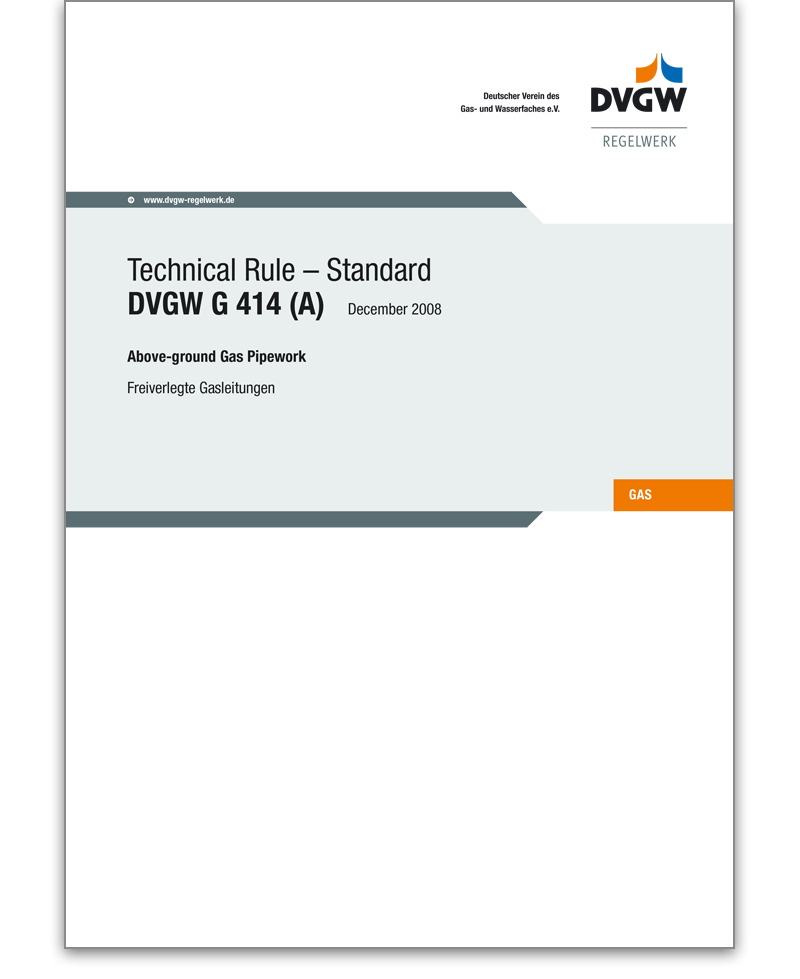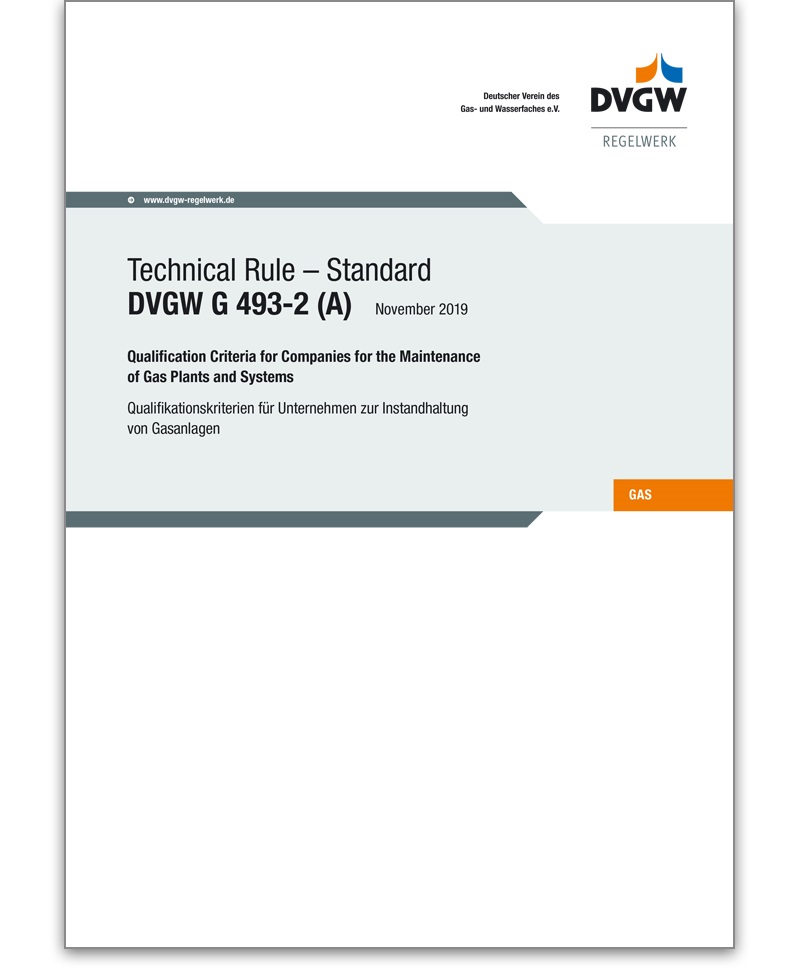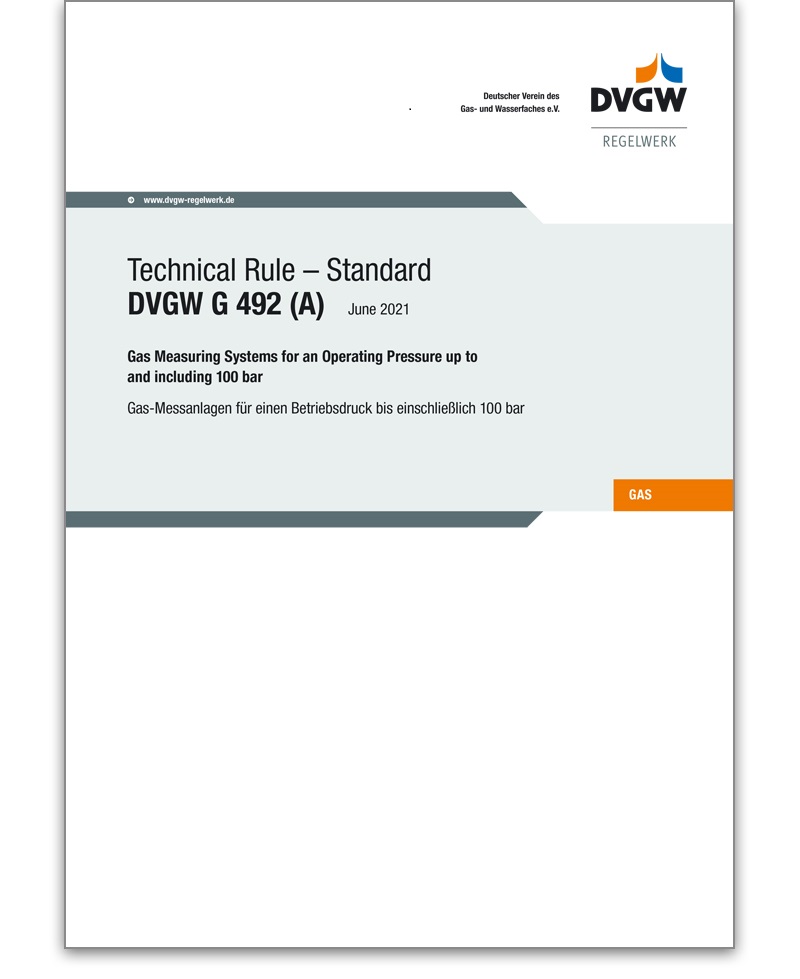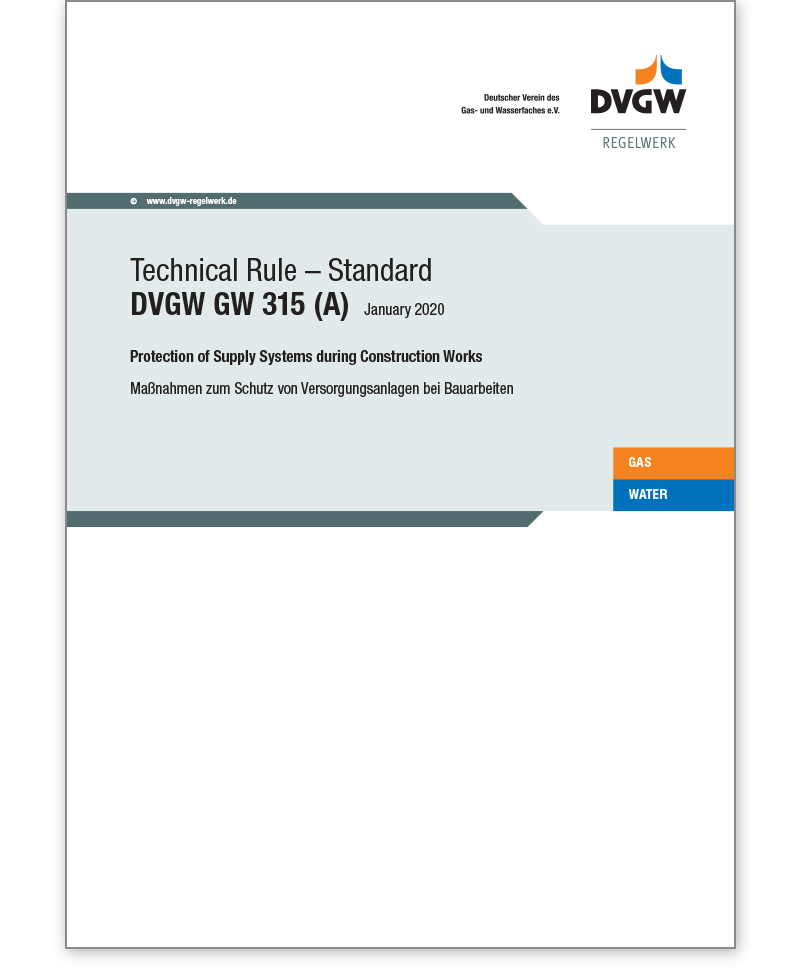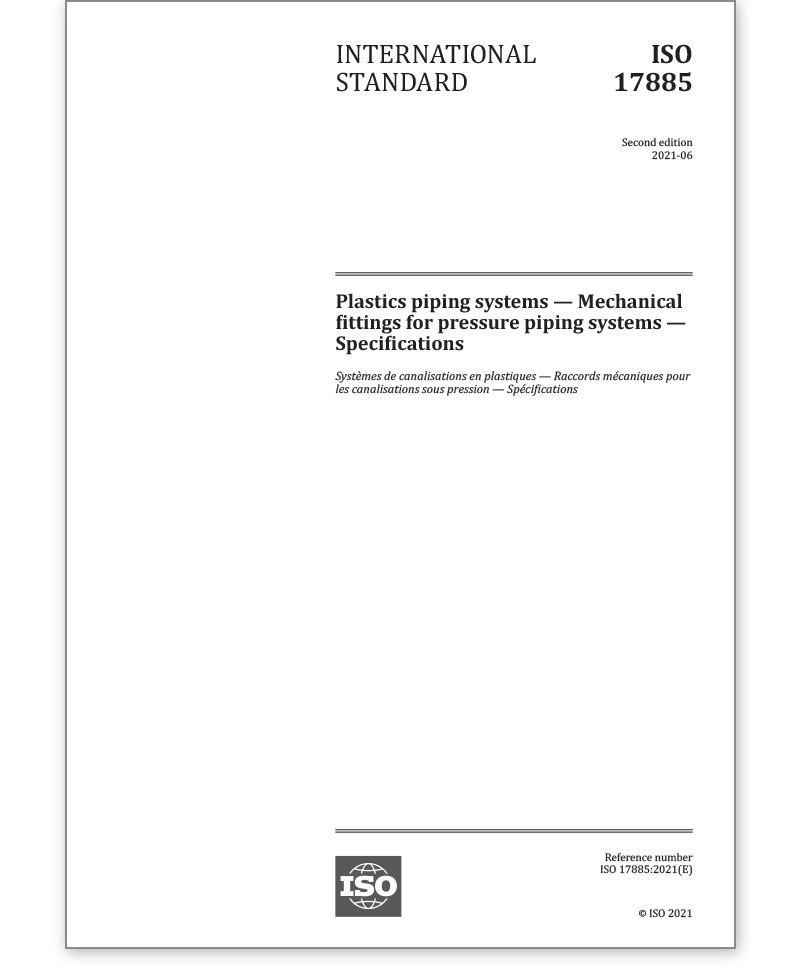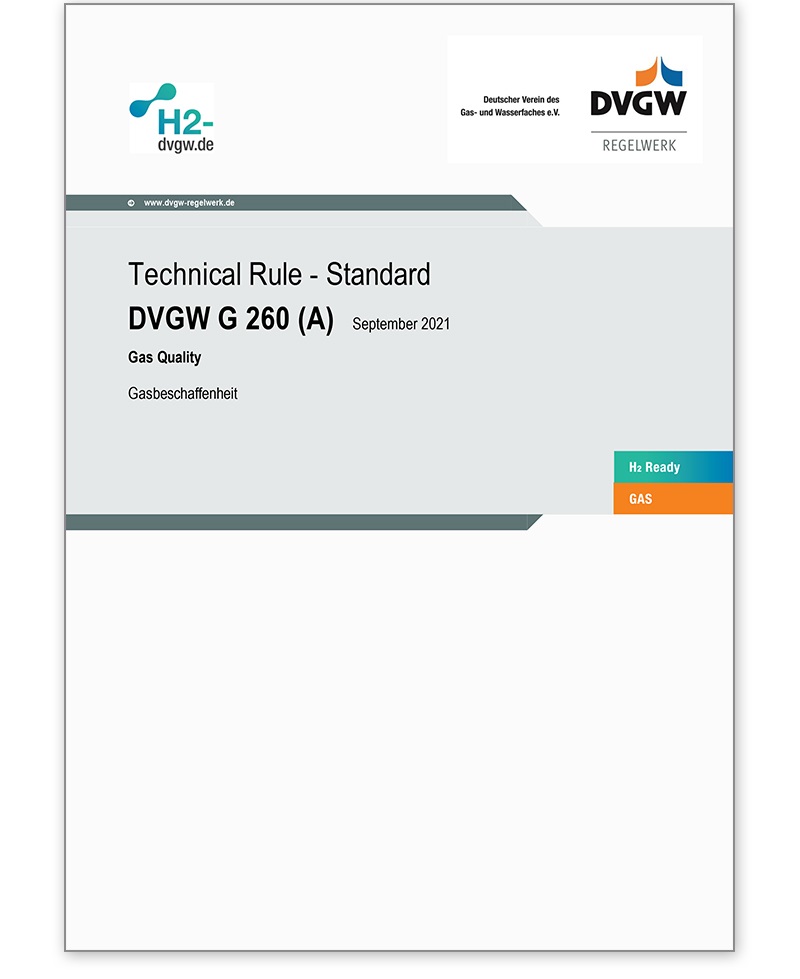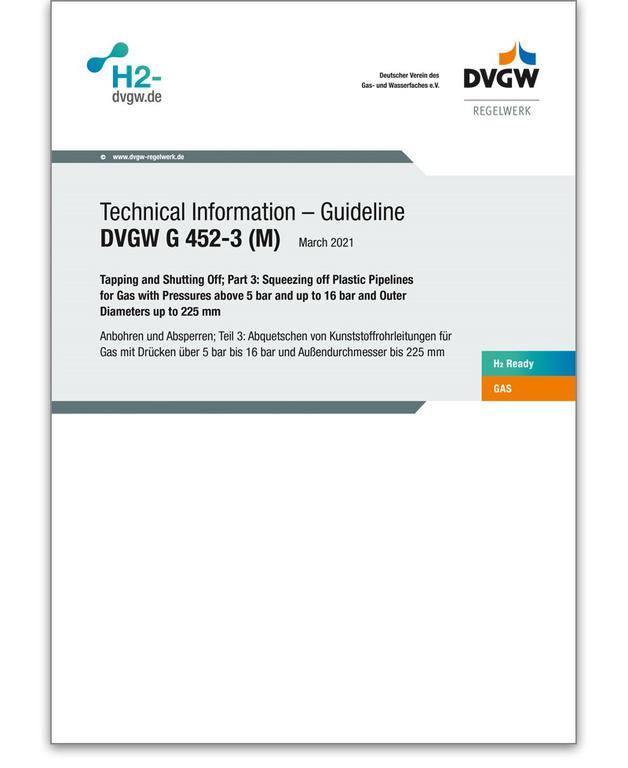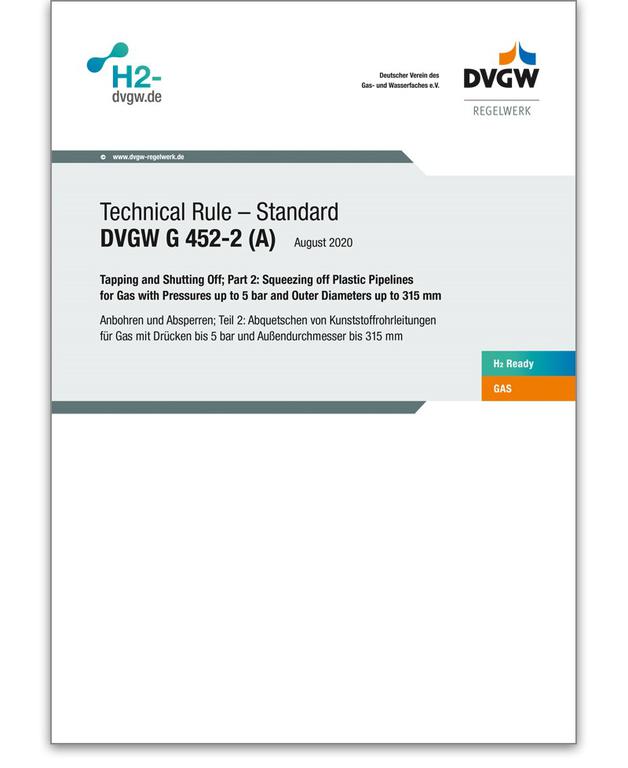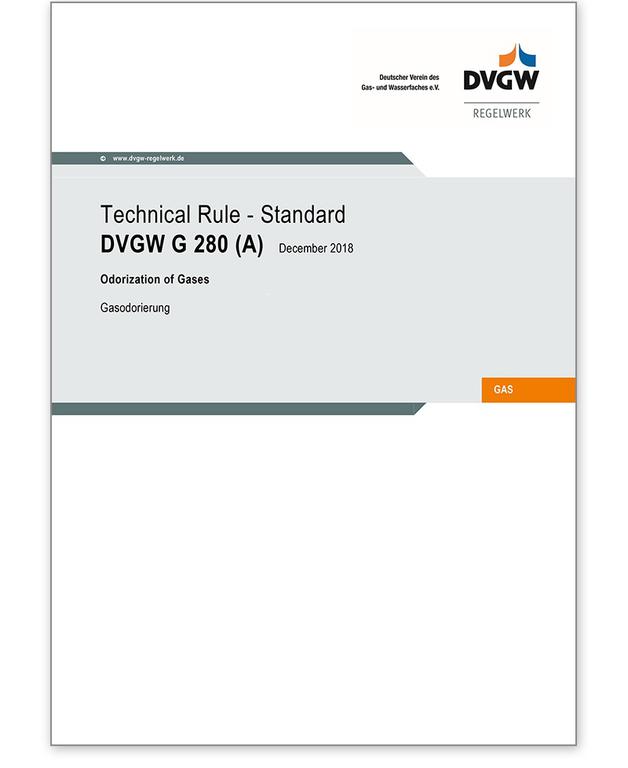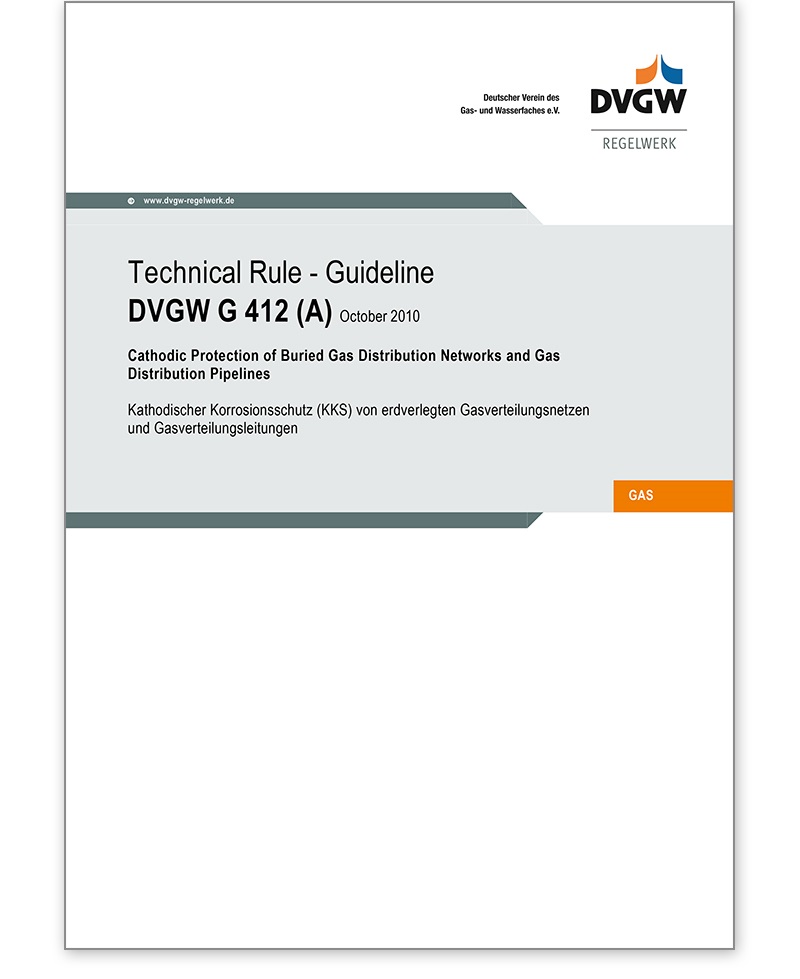
DVGW Set of Rules Gas
They ensure that gas can be used safely at all times. The DVGW Code of Practice is compulsory reading for gas suppliers, tradesmen, plumbers, engineers and anyone who deals professionally with the subject of natural gas.
G 464 Technical Information - Guideline 03/2023 -PDF file-
62,03 €*
This
Guideline G 464 shall apply for the fracture mechanical assessment of steel gas
pipelines that already exist or are projected for construction with a design
pressure of more than 16 bar for the transportation or distribution of gases of
the 5th gas family (hydrogen) as specified by DVGW Code of Practice G 260.
This
present Guideline G 464 addresses the assessment of an assumed defect; for the
assessment of measured defects, the guideline can be applied analogously.
G 408 Technical Information - Guideline 08/2022 -PDF file-
39,92 €*
This
guideline G 408 shall apply to the conversion of pipelines made from plastic to
hydrogen-containing, methane-rich gases (2nd gas family) or hydrogen (5th gas
family) in accordance with DVGW Code of Practice G 260 up to an operating
pressure of 16 bar and ends with the main shut-off valve, the thematic
threshold to DVGW Guideline G 655. This guideline G 408 can also be applied to
the conversion of plastic gas pipeline operated with gases that do not conform
to the specifications of DVGW Code of Practice G 260 if the gases’ specific
characteristics and, if applicable, other existing regulations are taken into
account. The respective guidelines on pipeline conversion shall be consulted
for networks using different pipeline materials (e.g., plastic and steel).
G 407 Technical Information - Guideline 08/2022
62,03 €*
This
guideline G 407 shall apply to the conversion of pipelines made from steel to
hydrogen-containing, methane-rich gases (2nd gas family) or hydrogen (5th gas
family) in accordance with DVGW Code of Practice G 260 up to an operating
pressure of 16th and ends with the main shut-off valve, the custody transfer
point to DVGW G 600 (A), respectively to G 614.1 (A) (including the additions
detailed in DVGW Guideline G 655).
This
guideline can also be applied to the conversion of steel gas pipeline operated
with gases that do not conform to the specifications of DVGW Code of Practice G
260 when taking into account the gases’ specific characteristics and, if
applicable, other existing regulations. The respective guidelines on pipeline
conversion shall be consulted for networks using different pipeline materials
(e.g., plastic and steel).
Forschungsbericht G 202006 01/2023 -pdf-file-
246,10 €*
For hydrogen transmission within the German gas grid, it is
imperative to obtain a clearly defined assessment of steel components for hydrogen
suitability and relevant implementation in the DVGW Codes of Practice. Within this context, DVGW
Code of Practice G 409 (for the conversion of pipelines to hydrogen transmission) and
DVGW Code of Practice G 463 (for the construction of new pipelines), for example, have
been specifically aligned to hydrogen as a transmission medium. Both these codes of practice may
require a fracture-mechanical assessment of pipelines and pipeline components, with fracture-mechanical
parameters beingrequired as input variables.
So far, it was only in ASME B 31.12 [3] that these
parameters were specified in an international code of practice. They specifically involve minimum fracture
toughness (KIc) and the description of crack toughness (da/dN) with hydrogen as a
medium. However, the parameters specified in ASME B 31.12 were based on investigations on US
materials which are verysimilar, but not identical, to the materials used in Germany
and elsewhere in Europe. Furthermore, the conversion of existing older natural gas
pipelines (comprising older materials) is of very considerable interest particularly for the scope
of application of the DVGW Code of Practice, although a direct transferability of the US
investigations was considered to be problematic.
Hence, within the context of the DVGW’s extensive SyWeSt H2
research project, fracturemechanical investigations were performed specifically for the pipeline
steel grades used in Germany (and, in some cases, elsewhere in Europe) with
hydrogen as a medium. The objective of this project was to compare the established
fracture-mechanical parameters with the results on which ASME B 31.12 is based for the purpose
of validating their application to steel grades used in Germany and, where applicable, drawing
up a modified correlation for crack growth.
Forschungsbericht G 201912 07/2022 -PDF-Datei-
246,10 €*
In recent years, the relevant DVGW Codes of Practice and
associated information sheets for carrying out and evaluating the above-ground
inspection of natural gas pipelines have been revised. In addition, measurement
technology and data processing (digitisation) have developed constantly. For
the above-ground inspection of buried pipelines in the distribution network through
inspections and drives, new measurement methods are increasingly being used. In
the EvaNeMeL research project, these new measurement methods were evaluated
both theoretically and through experimental investigations. Five
vehicle-mounted measurement systems and three hand-held remote gas detection
methods were investigated. The results demonstrate the performance of the novel
methods against a benchmark and also to serve as a basis for a subsequent
supplement to the DVGW rules and regulations for above-ground inspection. The
benchmark was an experienced “Gasspuerer” (gas safety personnel) who carried
out a walk-through with a probe-based PortaFID M3K in parallel to the
experimental investigations. This established walk-through of buried pipelines
results in a high level of safety for the public gas supply.
G 463 Technical Rule - Standard 10/2021 -PDF file-
79,28 €*
In
conjunction with DIN EN 1594, this Technical Rule G 463 applies to the planning
and construction of steel high pressure gas pipelines with a design pressure of
more than 16 bar for supplying gas to the general public as well as to
connected energy facilities on company premises and in the field of commercial
gas application of gases of the 2nd and 5th gas family as defined by DVGW Code
of Practice G 260.
The scope
of application has no upwards limitation in terms of the technical parameters
nominal diameter and design pressure.
This
Technical Rule can be applied mutatis mutandis to the construction of high
pressure gas pipelines which do not conform to the specifications of DVGW Code
of Practice G 260, provided that the specific characteristics of the gases or,
if applicable, other already existing technical sets of rules are taken into
account.
G 414 Technical Rule - Standard 12/2008 -PDF-file-
62,03 €*
The DVGW set of rules G 414 for the installation (planning, building and commissioning) of gas pipework focuses
on buried gas pipework; it contains only few instructions to be observed when installing above-ground gas
pipework.
G 493-2 Technical Rule - Standard 11/2019 -PDF-File-
62,03 €*
This standard G 493-2 encompasses personal and professional
requirements for companies providing maintenance for gas plants and
installations that fall within the scope of DVGW G 495 (A), as well as biogas
injection and refeeding plants as specified by DVGW G 265-2 or hydrogen
injection plants as specified by DVGW G 265-4 (M).Companies which, within the
context of comprehensive plant management, either as original operators or as
contractors, are responsible for the maintenance of energy plants, and possess
the required personal qualification and organization according to DVGW G 1000
(A), may conduct the maintenance of gas plants without certification as defined
by this standard within the network which they have the abovementioned
responsibility for. The prerequisite for the maintenance without certification
as mentioned above is that the expert and tech-nical conditions detailed in
this standard are met by the company’s own workforce or by service providers
with a TSM certification or other corresponding certifications. The company
shall appoint the experts re-sponsible for maintenance in writing. The
fulfilment of these conditions can be verified e.g. during a TSM review
according to DVGW G 1000 (A).
G 492 Technical Rule - Standard 06/2021 -PDF-file-
62,03 €*
This Technical Rule G 492 governs planning, manufacturing,
assembly, testing, commissioning and operation, as well as decommissioning and
disposal of gas measuring systems of up to 100 bar1 in gas transportation and
distribution systems and stations supplying commercial, industrial, or other
comparable facilities.
GW 315 Technical Rule - Standard 01/2020 -PDF-file-
39,92 €*
Code of Practice GW 315 provides essential information on
how to avoid damaging to existing supply systems during construction
operations. It applies to all construction work
and regulates the requirements for construction contractors and
operators of supply systems.
ISO 17885 06/2021 -pdf-file-
183,51 €*
This document ISO 17885 specifies the requirements for
mechanical fittings for joining plastic piping systems for the supply of
gaseous fuels, the supply of water for human consumption and other purposes, as
well as for industrial application.
It provides a unified set of test methods to check the
performance of the fittings, depending on their intended use.
It is the responsibility of the purchaser or specifier to
select the appropriate fitting, taking into account their particular
requirements and any relevant national guidance or regulations and installation
practices or codes.
G 260 Technical Rule 09/2021
110,68 €*
This Technical Rule G 260 specifies the
requirements for the quality of fuel gases used
in the supply of the general public with gas and
sets the parameters for gas delivery, gas
transportation, gas distribution, gas storage,
operation of gas plants/systems and gas
appliances for commercial and industrial gas
applications as well as for development,
standardization, and testing.
Gases transported in separate pipelines which are
not used in the supply of the general public, or
are used as energy carrier or resource, and/or
are used in special gas appliances are not
subject to the scope of this Technical Rule.
G 452-3 Technical Information - Guideline 03/2021
39,92 €*
G 452‑3 Technical Information ‑ Guideline 03/2021
G 280 Technical Rule 12/2018
110,68 €*
This Technical Rule G 280 applies to all gases
covered in DVGW Codes of Practice G 260 and G 262
respectively Standards DIN EN 16723-1 and -2 as
well as DIN EN 16726 and all gases used for the
supply
via pipeline system of the general public and
other consumers with a comparable level of
safety.
When using sulfur-containing odorants, the fact
shall be taken into account that the entailed
increase of
the sulfur content in the gas is undesirable for
some applications, such as its use as basic
material in the
chemical industry.
Industrial companies using natural gas
exclusively on company premises can forego
odorization if the
operator utilizes other measures to maintain the
industrial gas plant or system’s safety.
When switching from one odorant to another,
special attention shall be paid to Section 9.
The calibration of measuring devices for odorant
control requires test gases which are detailed in
Section
10.
